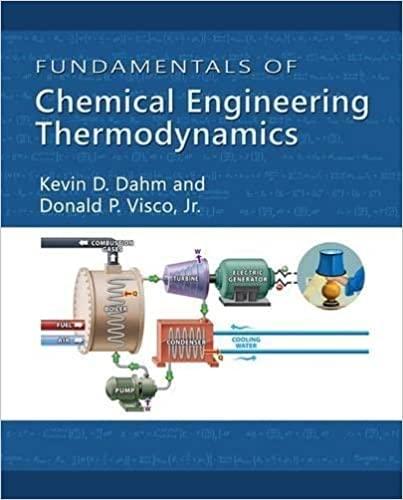A steady-state liquefaction process generates 100 lbm/min of saturated liquid methane at P = 10 psia. Fresh
Question:
A steady-state liquefaction process generates 100 lbm/min of saturated liquid methane at P = 10 psia. Fresh methane enters the process at T = 75°F and P = 10 psia, and is mixed with the recycled methane to form the “methane feed” stream. This enters a heat exchanger (HX1) that cools the methane feed to T = –100°F and P = 10 psia. The process has two compressors (both = 0.75: the first compresses the methane to P = 100 psia and the second compresses the methane to P = 1000 psia). Each compressor is followed by a heat exchanger (HX2 and HX3) that cools the methane to T = –100°F without changing the pressure. Next, the supercritical methane enters a counter-current heat exchanger (HX4) in which the methane vapor from the flash chamber is used as the coolant. The coolant leaves HX4 at T = –110°F and is recycled into the “methane feed” stream. The supercritical methane leaves HX4 and enters a flash chamber, where its pressure is reduced to P = 10 psia.
A. Determine the flow rate of the supercritical methane entering the flash chamber.
B. Determine W for each of the two compressors.
C. Determine Q for each of the four heat exchangers.
Step by Step Answer:

Fundamentals Of Chemical Engineering Thermodynamics
ISBN: 9781111580704
1st Edition
Authors: Kevin D. Dahm, Donald P. Visco





